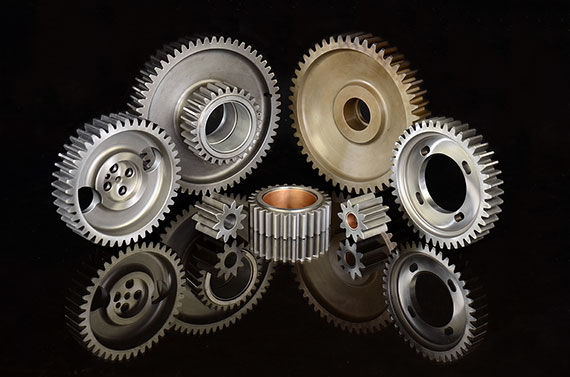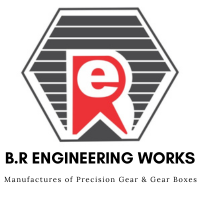Spur Gear
Gear teeth could be manufactured with a wide variety of shapes and profiles. The involute profile is the most commonly used system for gearing today. It is a cylindrical gear with teeth parallel to the axis. An involute is a curve that is traced by a point on a taut cord unwinding from a circle, which is called a BASE CIRCLE. The involute is a form of spiral, the curvature of which becomes straighter as it is drawn from a base circle and eventually would become a straight line if drawn far enough.
Spur gear has teeth on the outside of a cylinder and teeth are parallel to the axis of the cylinder. This simple type of gear is the most common type its volume or the tooth usage is the largest of all types. The Shape of the tooth is that of an involute form. There are, however some notable exceptions, precision mechanical clock’s every often use. cycloidal teeth since they have lower separating loads and generally operate more smoothly than involute gears and have less tendency to bind.

The cycloidal form is not used for power gearing because such gears are difficult to manufacture because sensitive small changes in center distance and not as strong or as durable as involute form. The most common pressure angle for spur gear 14 1/2′, 20′ and 25′. In general 14 1/4, pressure angle are not used for new design. The lower pressure angle have the advantage of smoother and quicker tooth action because of the large profile contact ratio and the higher pressure angle have the advantage the better load carrying capacity with respect to both strength and durability and lower sliding velocities. In some cases very high pressure angle 28°, 30° and in few cases as higher 45° are employed in some special slow speed gears for very high load capacity where noise is not the predominant consideration. The minimum of equipment is required to produce this type of gear thus it is usually the least expensive of all forms of gearing. While the common tooth form for spur gears is the involute.
Use of Spur Gear
- Spur gears are used only when the shaft are parallel. Spur gears impose radial loads on the shafts.
- We manufacture Spur Gears with following specifications.
| Gear Type | Normal Module in mm | Outside Diameter in mm | ||
| Minimum | Maximum | Minimum | Maximum | |
| Spur Gear-Hob Finish | 0.5 | 30 | 10 | 3000 |
| Spur Gears-Hardened & Precision Ground | 0.5 | 10 | 50 | 750 |
